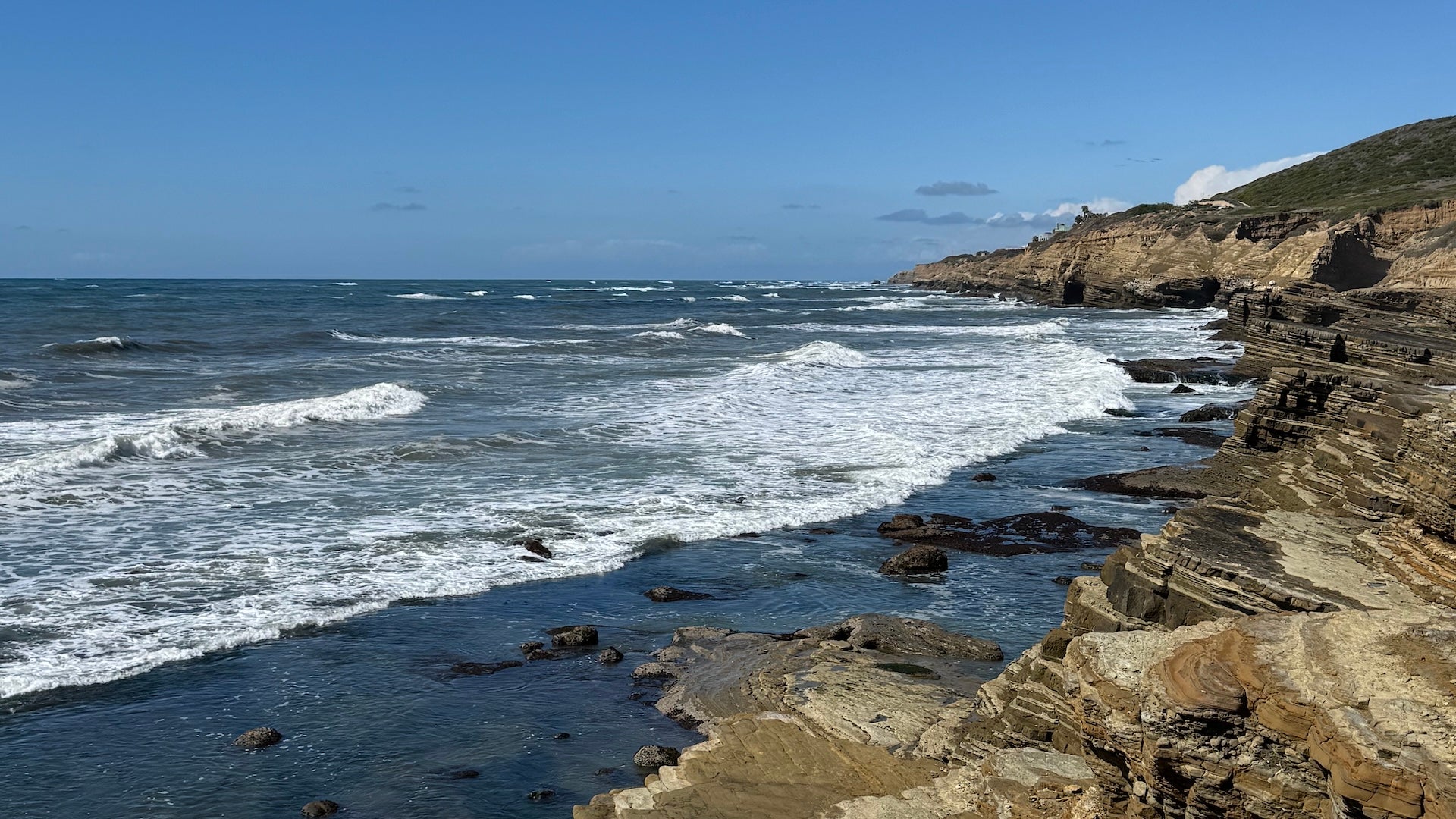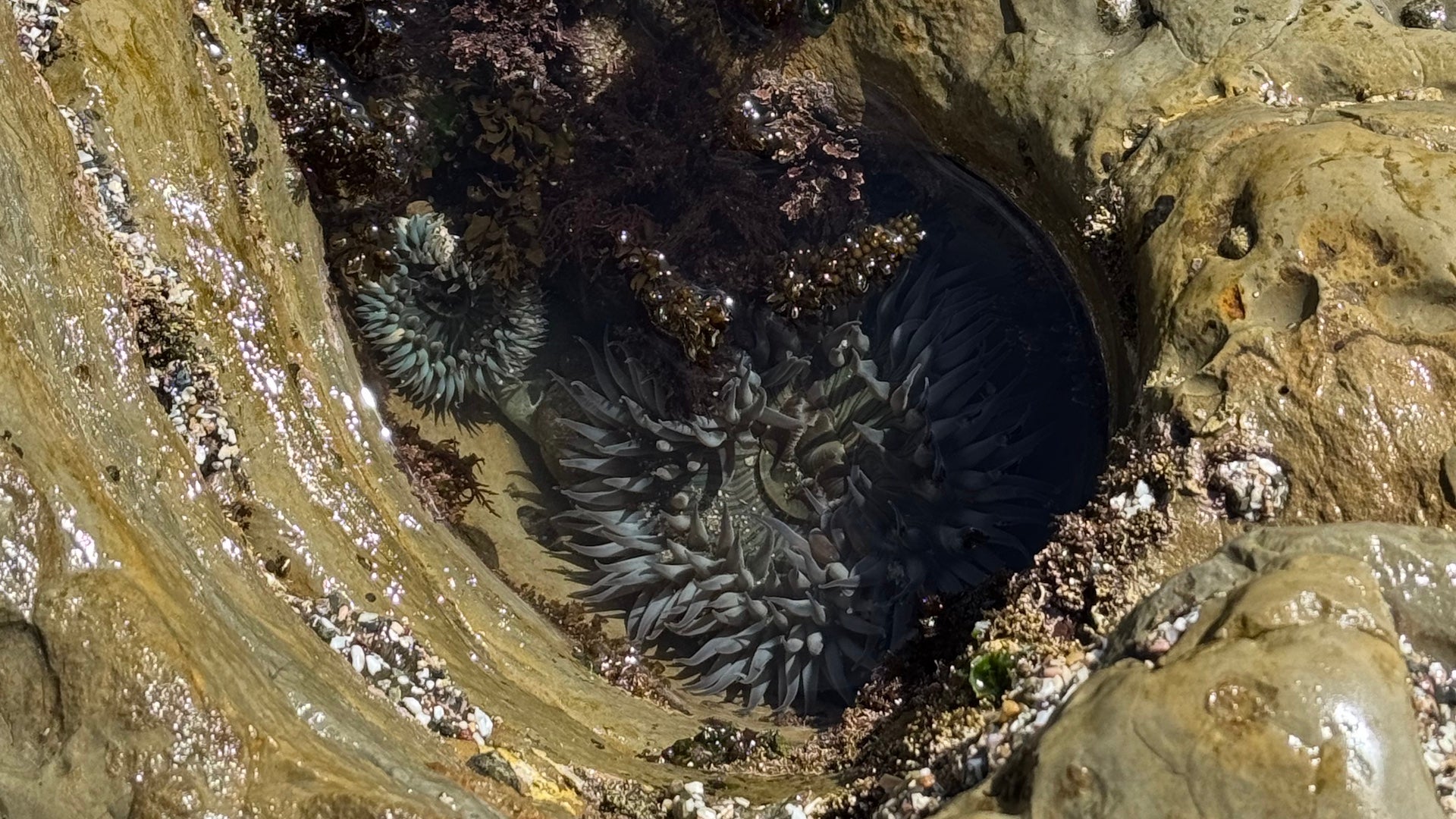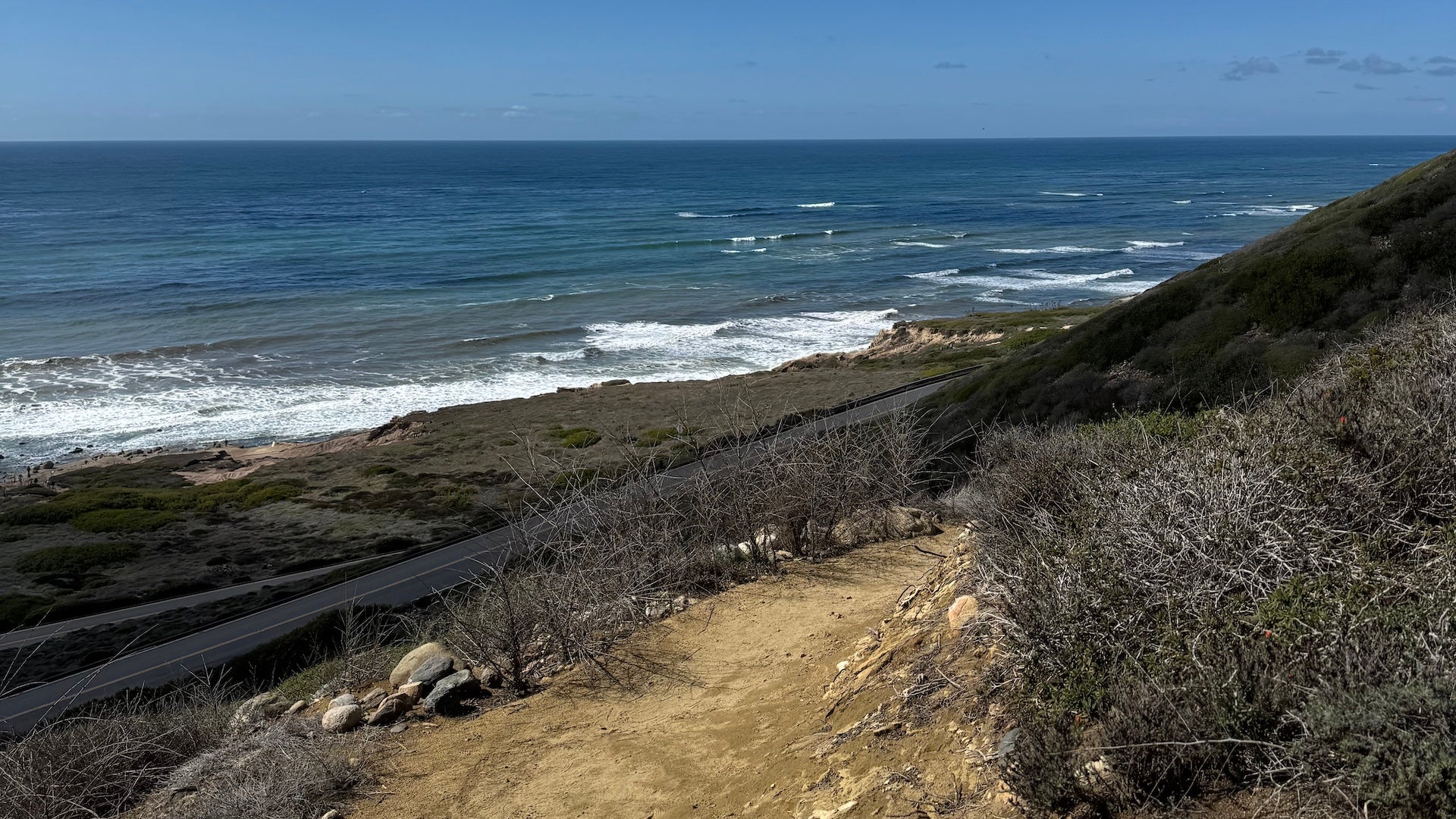We Hiked to Point Loma Tide Pools. Was It a Mistake?

Katherine: So we’re actually hiking down the cliff today?
Kelsi: Yes. And back up. No illusions of casual. But yes.
We left the Old Point Loma Lighthouse behind, sneakers on, water bottle in hand, sunscreen applied with varying levels of commitment.
Our destination was the tide pools below, tucked into the rocky coastline at Cabrillo National Monument.
For the record, yes, you can drive down to the lower parking lot and get pretty close. We just decided to hike because we apparently woke up feeling outdoorsy and mildly overconfident.
It also sounded like the kind of thing that would make us feel accomplished without requiring emergency electrolytes.
What followed was part scenic trail, part calf workout, and part internal monologue about our life choices.
If you’re thinking about doing it yourself, here’s the real talk on what it’s like, why it’s actually worth it, and how to not spiral halfway back up.
The Details They Won’t Whisper
Here’s how it works, according to the actual trail maps and not just our vague optimism: there are two main paths that get you from the top of Cabrillo down to the tide pools.
The first is the “Coastal Trail,” which sounds relaxing but is really just a gentle way of saying “prepare your ankles.”
It winds along the western edge of the peninsula and eventually drops you at the tide pool access zone. The second option is the “Oceanside Trail,” which is newer, steeper, and feels like it was designed by someone who wanted you to earn your views with a little extra lung power.
If you’re in the “I’m just here to look at cool sea stuff, not conquer Everest” camp, don’t worry — there’s a lower parking lot you can drive to and stroll in from there.
We support that choice. We just opted to hike because we’re very brave and also bad at planning.
The trail itself starts near the lighthouse and immediately commits to the bit. It’s a mix of dirt paths, uneven rock, a handful of stairs, and lots of sun.
One direction gives you views of the San Diego skyline and harbor. The other direction gives you the open Pacific and a breeze strong enough to undo your ponytail. Somewhere in the middle, you start to feel like a nature documentary extra.
Eventually, you reach the rocky landing zone above the tide pools. This is where you pause, take 14 photos, and pretend you aren’t already dreading the return hike.
Then it’s down to the tide pools themselves — a slippery, sea-splashed wonderland filled with starfish, sea anemones, cartoonish crabs, and whatever mystery creatures have decided to show up for low tide. Everything’s shiny, wobbly, and slightly prehistoric.
And then you turn around.
You look back up the path you just came down.
And you realize gravity was not your friend, but it was at least polite.
Going back up? That’s a different conversation entirely.
You will feel your thighs.
They will have opinions.
But you’ll also feel wildly accomplished, and maybe a little smug.
Which, let’s be honest, is half the point.

Why This Is Worth Every Step (AKA Tide Pool Royalty Behavior)
Now that you’ve made it down without spraining anything and have mentally committed to the climb back up, it’s time to explore the actual reason you’re here: the tide pools.
Let’s be clear—these are not some sad puddles with one lonely barnacle and a questionable piece of seaweed. These are legit tide pools. Like, National Geographic could film here if they had a drone and lower standards.
Depending on the tide and your luck, you might spot:
- Sea stars clinging to rocks like they’re auditioning for a yoga ad
- Sea anemones doing their slow-mo dance moves underwater
- Hermit crabs aggressively changing real estate right in front of you
- Snails, limpets, and chitons, which are all real creatures and not just words from a spelling bee
- Algae that looks suspiciously like it could come back as a skincare ingredient
- And occasionally, octopuses or spiny lobsters if the tide gods are in a good mood
It’s a surreal little ecosystem that looks like it should come with a warning: “May cause spontaneous wonder.”
A Few Rules That Will Keep You From Getting Side-Eyed by Rangers (and the Ocean Itself)
Before you go full marine biologist, here’s how to be a good human down there:
- Look, don’t touch. Yes, the sea anemones are squishy. No, that doesn’t mean you should poke them like a toddler in a bounce house.
- Leave everything where it is. That includes shells, rocks, sea creatures, and anything else that makes you say “aww.” The tide pool zone is protected, and if everyone took a souvenir, there’d be nothing left but wet disappointment.
- Stay on durable surfaces. That means avoid trampling on delicate marine life just to get a better angle for your Instagram Story. Flat rocks are your friend. Slippery algae is not.
- Don’t turn your back on the ocean. Sneaker waves are real, and they do not care about your selfie game. Stay alert and stay dry—or at least pretend to try.
- Check the tides before you go. If the tide is too high, the pools disappear. If it’s low, it’s like the ocean peeled back a curtain and said, “Come on in.” Take a look at tide forecasts here.

Pro Tips to Avoid a Tide Pool Meltdown
Wear real shoes.
This is not a “cute sandals” situation. The rocks are wet, the algae is slippery, and gravity is always lurking. Closed-toe shoes with grip are your best friend. Bonus points if they say “I’m here for function, not fashion.”
Know your tides or know disappointment.
If you roll up during high tide, you’ll still get a great ocean view—but the tide pools will be under water, and the only thing you’ll be staring at is your own poor planning. Low tide is the star of this show. Do a quick tide chart check before you go so you’re not left squinting at invisible sea stars.
Pack water and a layer, no matter what your weather app says.
It can be 85 and sunny in the parking lot and somehow Arctic down by the pools. Bring a light jacket, even if you think you won’t need it. You’ll thank yourself when the breeze drops 10 degrees and your arms suddenly forget how to regulate temperature.
Don’t start your hike at noon like a rookie.
Midday is hot, crowded, and full of people wondering why they made such aggressive life choices. Start early or go later in the afternoon when it’s cooler, calmer, and you’re less likely to question your existence halfway up the hill.
The way down is fun. The way up is humbling.
Take your time on the descent. Stop for views. Channel your inner coastal geologist. Because once you turn around and start the uphill climb, you’ll need those little moments of peace to carry you through the thigh burn.
Should You Do It? Short Answer: Yes
If you’re into mild effort with maximum payoff, this is your kind of hike. You get cliffs, critters, crashing waves, and a minor cardio challenge that makes you feel like you accomplished something without needing to ice your knees afterward.
The trail down? Scenic. The tide pools? Basically a tiny alien planet with crabs. The hike back up? Humbling. But in a “this counts as exercise, right?” kind of way.
So yes, you should do it. Bring water, wear real shoes, check the tides, and mentally prepare to say “whoa” out loud at least four times. The tide pools are weird and wonderful, the views are ridiculous, and you’ll walk away with a solid story and possibly some calf definition. Win-win.